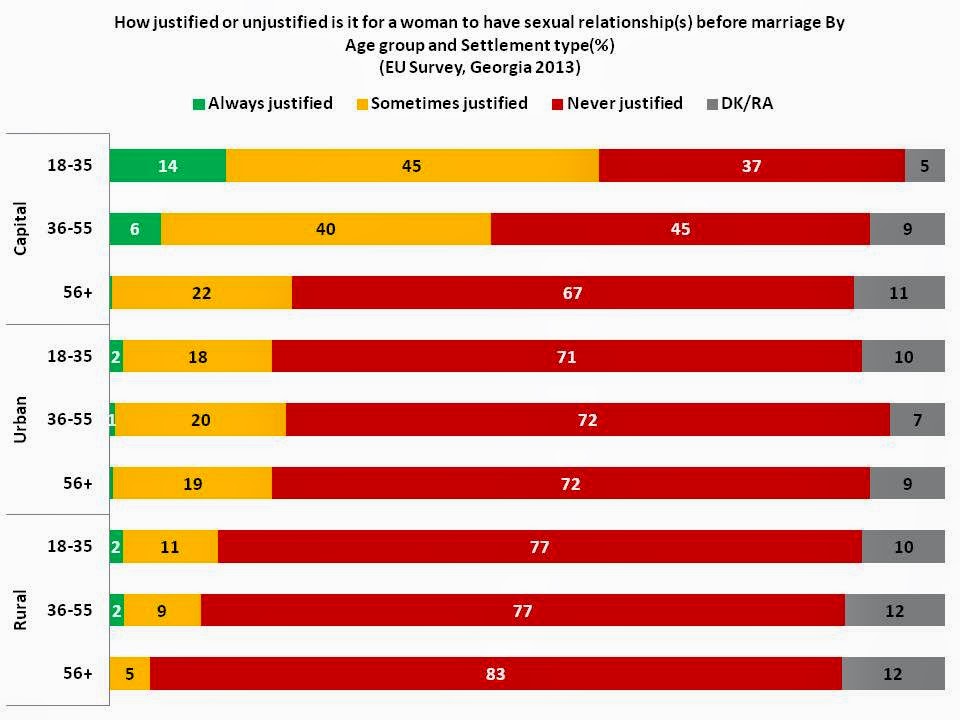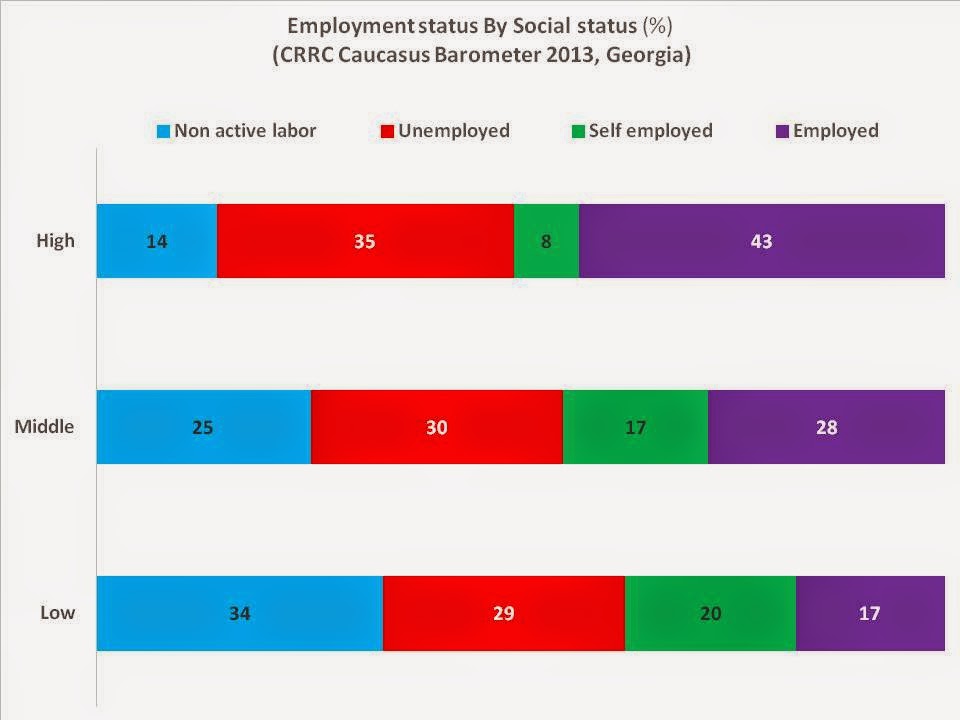Domestic violence counts for a considerable part of violence against women worldwide, with as many as 38% of all murders of women in 2013 being committed by intimate partners, compared with only 6% of murders of men according to the World
Health Organization. The gendered character of domestic violence is a pressing issue in the South Caucasus. In Georgia, 1 in 11 married women has been a victim of physical domestic violence. Compounding the issue, 78% of women in Georgia consider domestic violence a private matter that should remain in the family, according to the United Nations
Population Fund in 2010. Although, in Georgia 25
women were reported to have been killed by their husbands or partners in 2014 alone, the number is widely believed to be higher due to non-systematic
practices of recording violence against women. In contrast to both Azerbaijan and Georgia, in Armenia there is still no legislation against
domestic violence, with Amnesty
International reporting that the numbers of women having experienced violence from their husbands or family members in 2008 was as high as 1 in 4 women. Azerbaijan presents a similarly alarming case, with 83 women that have been killed and 98 that committed suicide as a result of domestic violence in 2013, according to the Council
of Europe. Against this background, it is important to have a closer look at people’s attitude towards violence against women and more specifically, towards domestic violence in Azerbaijan.
CRRC-Azerbaijan’s 2012 Social Capital, Media and Gender Survey in
Azerbaijan, funded by the Swedish International Development Cooperation Agency (SIDA), provides an opportunity to explore the attitudes of different socio-demographic groups of the Azerbaijani population towards violence against women. Respondents were asked, to what extent they agree or disagree with the statements, “There are times when women deserve to be beaten” and “Women should tolerate violence in order to keep their families together.” This blog post looks into how the attitudes of the representatives of various socio-demographic groups differ towards these two statements, which are jointly referred to as “violence against women”.
In general, Azerbaijanis are more inclined to agree that women should tolerate domestic violence in order to keep their family together (40%) than to agree that there are times when a woman deserves to be beaten (22%). Thus, part of the Azerbaijani population thinks that even though women do not deserve to be beaten, they should still tolerate violence in order to keep their families together.
In Azerbaijan, men are more inclined than women to think that there are times when women deserve to be beaten and/or that women should tolerate violence in order to keep their families together. Thus, 13% more men than women think that there are times when women deserve to be beaten, and 9% more men think that women should tolerate violence in order to keep their families together. Nevertheless, it is important to notice that women themselves (16% in the former case, and an alarming 36% in the latter one) also agree with the statements.
Note: Answers to both statements, “There are times when women deserve to be beaten” and “Women should tolerate violence in order to keep their families together,” were re-coded here and in the rest of the analysis as follows: “completely agree” and “somewhat agree” into “agree,” and “completely disagree” and “somewhat disagree” into “disagree.” Options “Do not know” and “Refuse to answer” are excluded from the analysis throughout the blog.
Attitudes towards violence against women also vary by settlement type. When moving from rural settlements to the capital, less people believe that women deserve to be beaten or that women should tolerate violence. The difference is visible when considering that 1 in 3 people in rural settlements think that there are times when women deserve to be beaten, against only 1 in 10 people agreeing with the statement in Baku. Moreover, almost every other person in rural settlements believes that women should tolerate violence in order to keep their families together, against less than 1 in 4 people that think so in Baku.
Attitudes towards violence against women also vary by economic situation. About a third (30%) of those that describe their economic situation as poor believe that there are times when women deserve to be beaten and half of them believe that women should tolerate violence, compared with 16% and 17% of those reporting their economic situation as good. Thus, it seems that the better their economic situation, the less Azerbaijanis tend to think that violence against women is justifiable.
Note: Answer options on economic situation were re-coded as follows: “very good” and “good” into “good” and “very poor” and “poor” into “poor”.
When it comes to the level of education, the most visible cleavage in relation to attitudes towards violence against women is between the people with higher education and everyone else. Not unexpectedly, people with higher education are less inclined to believe that women deserve to be beaten or that they should tolerate violence, compared to the rest of the population of Azerbaijan.
Note: Level of education was re-coded as follows: options “Vocational/technical degree”, “High school diploma (10 or 11 years)”, “Nine year diploma,” and “Did not obtain a nine year diploma” were combined into “High school/technical degree or lower,” and options “Bachelors degree/5 years diploma” and “Any degree above bachelors” were combined into “Bachelors degree/5 years diploma or higher”.
This blog post explored the attitudes of different socio-demographic groups in Azerbaijan towards violence against women, with a specific focus on domestic violence. The analysis showed that the more educated and the better off economically people are, the less they tend to believe that women should be beaten or that they should tolerate violence in order to keep their families together. The same is also true for women and people living in the urban settlements ̶ especially in the capital ̶ as opposed to men and people living in rural settlements of Azerbaijan.
What do you think are the attitudes of people in Georgia and Armenia towards violence against women? Join in the conversation on the CRRC Facebook page or in the comments section below.


























